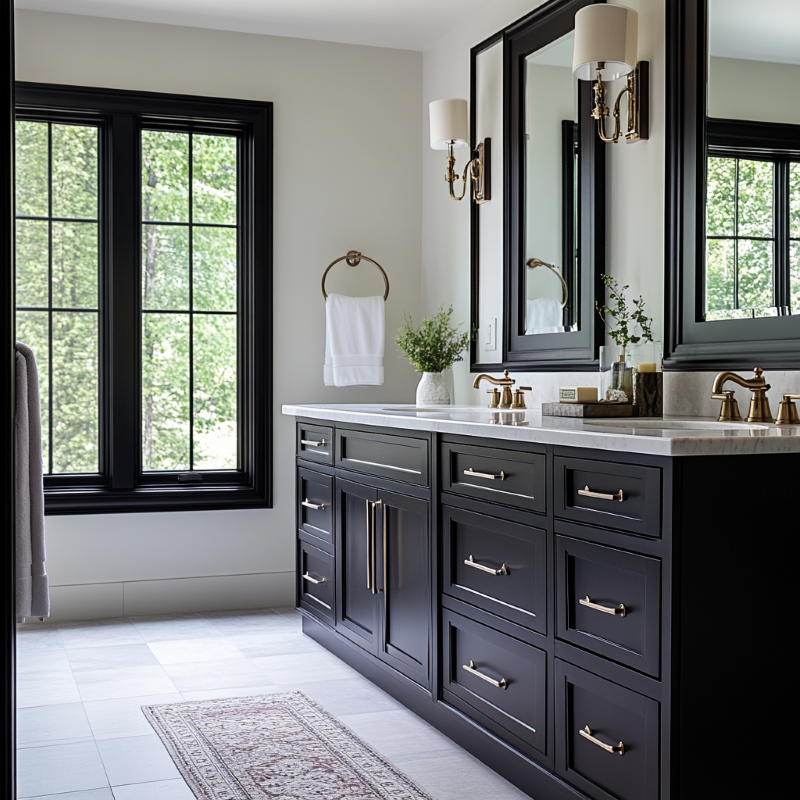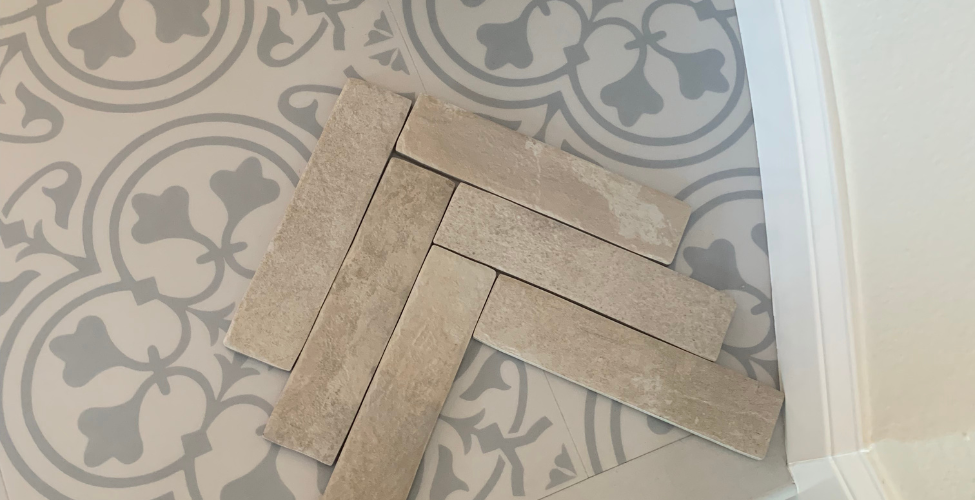Change orders during a remodel can be a homeowner’s worst nightmare. They lead to unexpected delays, budget overruns, and disruptions to the construction process. While some change orders are unavoidable, most can be prevented with thoughtful planning and clear communication. As a Design-Build Firm, we specialize in guiding homeowners through the remodel process smoothly. Here’s how to avoid change orders and keep your project on time and on budget.

Start with a Detailed Plan
The best way to avoid change orders is to begin with a well-thought-out design plan. Many change orders result from unclear project goals, incomplete designs, or rushed decisions at the last minute. A comprehensive planning phase ensures that your design is solid, and everyone is on the same page before construction starts.
Clarify your vision: If you are not able to visualize, hire a designer who can provide 3D Renderings so you won’t change your mind once the materials start being delivered. Work closely with your design-build team to finalize your design, layout, and material choices before the first hammer swings.

Leave no detail untouched: Go over every aspect of your project, from the big decisions like floor plans to smaller ones like hardware and lighting fixtures. The more details you finalize upfront, the fewer surprises will arise during construction. You could fall in love with a small detail that completely changes the design.
Investing time in pre-construction planning may seem tedious, but it will save you time, money, and stress in the long run. Give yourself at least 6 months to plan before starting Construction. That way if you see something and change your mind, you have time to reconfigure.
See the post here: WHY DESIGN COMES BEFORE CONSTRUCTION

Set a Realistic Budget
Budget concerns are a common reason for change orders. Sometimes, during the project, homeowners realize they want to upgrade materials, add extra features, or modify the scope, all which add to the cost. Or the other way around, that tile you fell in love with will have to be foregone because you found a less expensive option. Depending on the timing, a reselect for a less expensive item could actually cost more due to labor. Be sure and account for all fees, shipping, delivery, storage, pick up, restocking, sales tax, etc. By setting a realistic budget from the start and sticking to it, you can minimize the temptation to make last-minute adjustments.

Prioritize your must-haves: Clearly define what elements of the remodel are most important to you. This will help you stay focused and avoid getting sidetracked by shiny new options that weren’t part of your original plan.
Factor in contingencies: Include a 10-20% buffer in your budget for unexpected costs like material price fluctuations or backorders. Knowing you have a cushion will prevent unnecessary financial stress if something becomes unavailable or if you fall in love with something out of the budget.
Having a clear budget gives you the discipline to stick to your original vision and avoid expensive changes mid-project.

Hire an Experienced Design-Build Firm
Working with an experienced design-build firm is one of the most effective ways to minimize change orders. A skilled team will guide you through the entire process, from design to construction, ensuring that everything is aligned with your goals and expectations. Working with just a contractor or a contractor and designer separately, can lead to miscommunication and delays. If you are working with an Interior Designer and Contractor, make sure they have a working relationship. Even if they are both well qualified professionals, they might not always work well together.
See post here: BENEFITS OF HIRING A PROFESSIONAL INTERIOR DESIGNER
Comprehensive Project Management: A design-build firm manages all aspects of the remodel, ensuring that the design, materials, and construction methods are fully coordinated. This reduces miscommunications or oversights that can lead to change orders.

Accurate initial estimates: Experienced design-build firms provide accurate estimates based on their expertise, so you won’t be surprised by major cost discrepancies or gaps in the project’s scope.
Read the blog post here: UNDERSTANDING A CONTRACTOR’S ESTIMATE: BATHROOM EDITION
Effective problem-solving: If an unexpected issue arises, a skilled team will find solutions quickly and efficiently, often without the need for a formal change order. Or before it becomes a significant problem.
Choosing the right firm or team of professionals ensures that your remodel stays on track from day one.

Make Decisions Early
Last-minute decisions are a common trigger for change orders. Whether it’s switching materials or altering the design, these changes almost always result in delays and added costs. To avoid this, aim to finalize all decisions before construction begins.
Material selection: Choose all materials, including flooring, countertops, fixtures, and paint colors, early in the design phase. This will ensure availability and allow your contractor to order everything in advance, reducing the risk of delays. Just because it’s in stock now does not mean it will be next month when you need it by.
Design choices: From cabinetry configurations to electrical outlet placements, make sure your design is fully finalized before construction starts. Changes to layout or functionality midway through the project can be expensive and time-consuming. Also, this ensures everything is where YOU want it. Don’t let you Contractor decide where you turn your lights on, just because something is “standard” does not mean that’s what will work best in YOUR home.
Custom orders: If you’re planning on any custom features, such as cabinetry or built-ins, make sure they are designed, approved, and ordered well before construction. Custom pieces often have longer lead times and any delay could disrupt your project timeline.
The earlier you make decisions, the smoother your remodel will go, and the fewer surprises you’ll encounter.

Understand Structural and Permitting Requirements
One of the most common causes of change orders is discovering unforeseen structural issues, leaks or repairs, or permitting requirements after construction has begun. While some of these issues are unavoidable, many can be avoided by doing your due diligence before the project kicks off.
Hire a professional for inspections: Before any demolition or construction starts, have a thorough inspection of your home, especially if it’s older. This can reveal potential issues like outdated wiring, faulty plumbing, or structural weaknesses that may need to be addressed. A contractor can do this inspection however I recommend an Inspector because they have nothing to gain from telling you that you have issues, a contractor could just be looking for work. Even if you have a leak in your bathroom and you are only planning to remodel the kitchen, it is best for the Contractor to know just in case there is anything that they can do. Also, if they already have a plumber onsite to do work, it will be cheaper than hiring a plumber later for a separate repair.
Permit timeline: Ensure all required permits are secured before construction begins. White technically this is the Contractor’s jo, each city is different and their timeline can change. Not all permits are easy to get, depending on the scope it could take 3-6 months just for review. If you do not have approved permits, the contractor cannot pass inspection which will put your job at a stand still. Make sure you ask to see your permits before they start any demo.
Understand local building codes: Make sure your design complies with local zoning laws and building codes. Again, this the Contractor’s responsibility, but it is a good practice to be informed and ask what codes are required. If a design element violates code, it will result in change orders or delays while the design is modified to comply. I would never charge a client or let them pay for a change because of my negligence on a code regulation. However, codes can change half way through a project. If you leave your project stagnant for some time, the new codes could take affect. In California, a permit is only valid for 1 year.
Being aware of technical and legal requirements will help prevent unwelcome surprises during your remodel.

Communicate Clearly and Frequently
Good communication is key to preventing misunderstandings that lead to change orders. You and your design-build team should have open, ongoing communication throughout the project to ensure everything runs smoothly.
Ask questions: If something is unclear about the design or construction process, don’t hesitate to ask for clarification. It’s better to address uncertainties early rather than facing issues later. Everyone makes mistakes, maybe you are unclear because someone is missing something or forgot a previous conversation.
Stay involved: Regular check-ins with your contractor ensure that the project is progressing according to plan. This allows you to catch any potential issues before they become larger problems. In the middle of a project, I see or speak with my clients on an every other day if not daily basis.
Review plans thoroughly: Before construction begins, go over all blueprints, 3D renderings, and material selections carefully. Confirm that everything matches your expectations and that there are no inconsistencies. Every small detail should be noted, even the smallest of changes. A minor detail might not seem significant enough to revise drawings but when the time comes that small edit might make all the difference.
Frequent communication keeps everyone on the same page, minimizing the likelihood of misunderstandings or misinterpretations that lead to changes.

Prepare for the Unexpected
Even with the best planning and an experienced team, unexpected issues can arise during a remodel, especially with older homes. Hidden problems like water damage, mold, or structural deficiencies may not be visible until demolition begins.
Have a contingency plan: I know I mentioned it before, but a Contingency is so important. Build flexibility into your timeline and budget to account for surprises. While change orders are sometimes unavoidable, having a buffer will help mitigate their impact.
Trust your team: If an issue arises, trust your design-build team to recommend the best solution. A skilled contractor will have the expertise to address challenges while minimizing disruptions to your project.
By anticipating the unexpected, you’ll be better prepared to handle issues without derailing your entire project.

Final Thoughts
Change orders can significantly impact your home remodel’s timeline and budget, but with proper planning, clear communication, and the right team in place, they can be minimized. By following these tips, you’ll ensure a smoother, more efficient remodeling process with fewer surprises along the way.
At our design-build firm, we pride ourselves on guiding homeowners through the remodel process with expert planning and execution. If you’re planning a home renovation, contact us today. We’ll work with you to ensure that your remodel stays on track, on budget, and free of unnecessary changes.







Leave a Reply